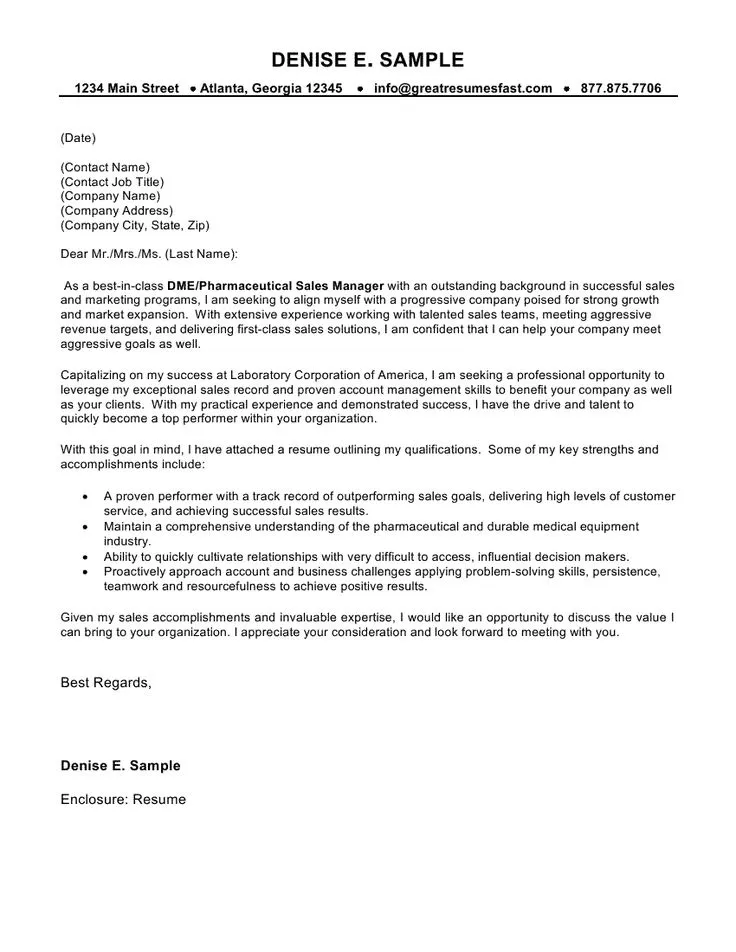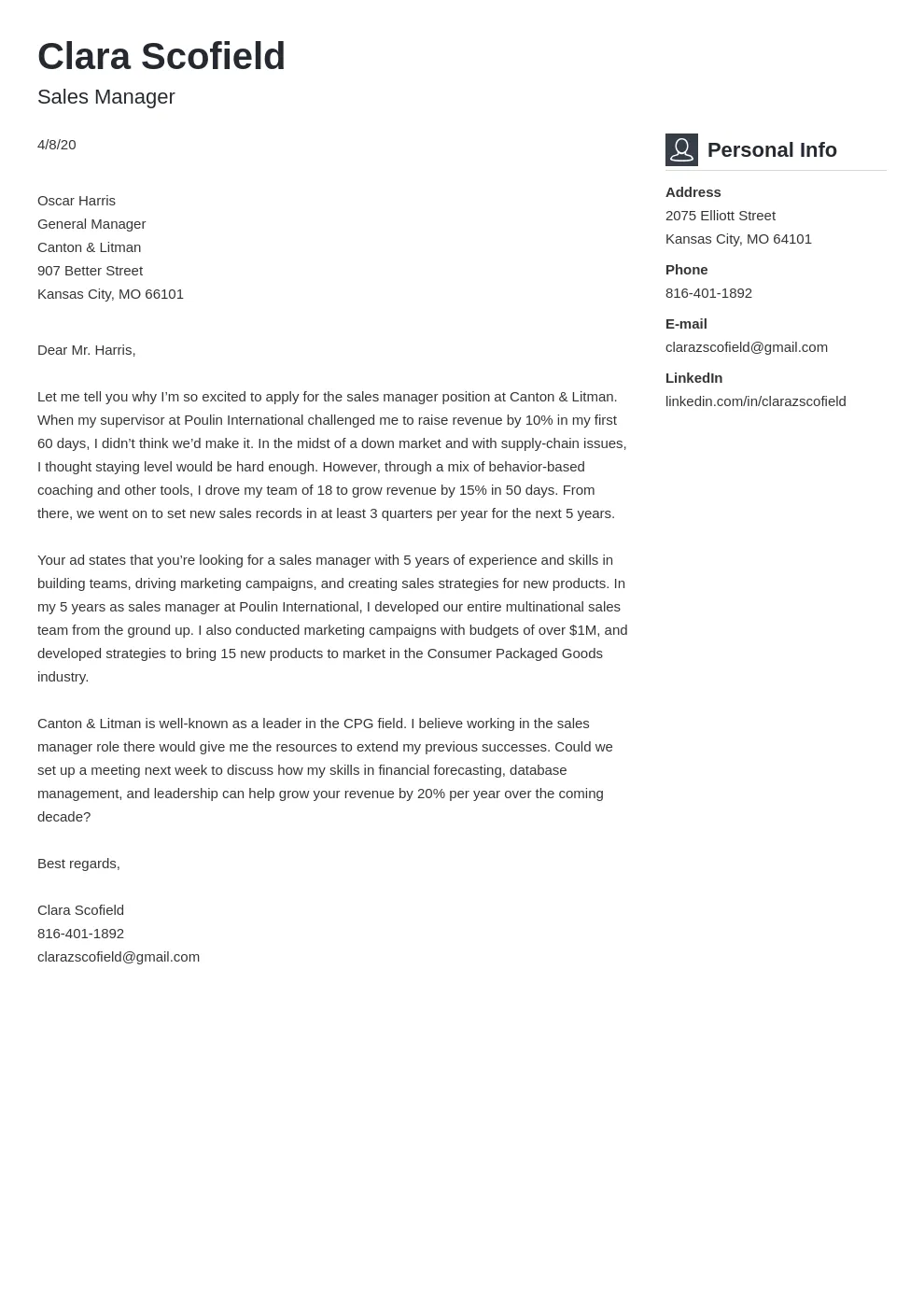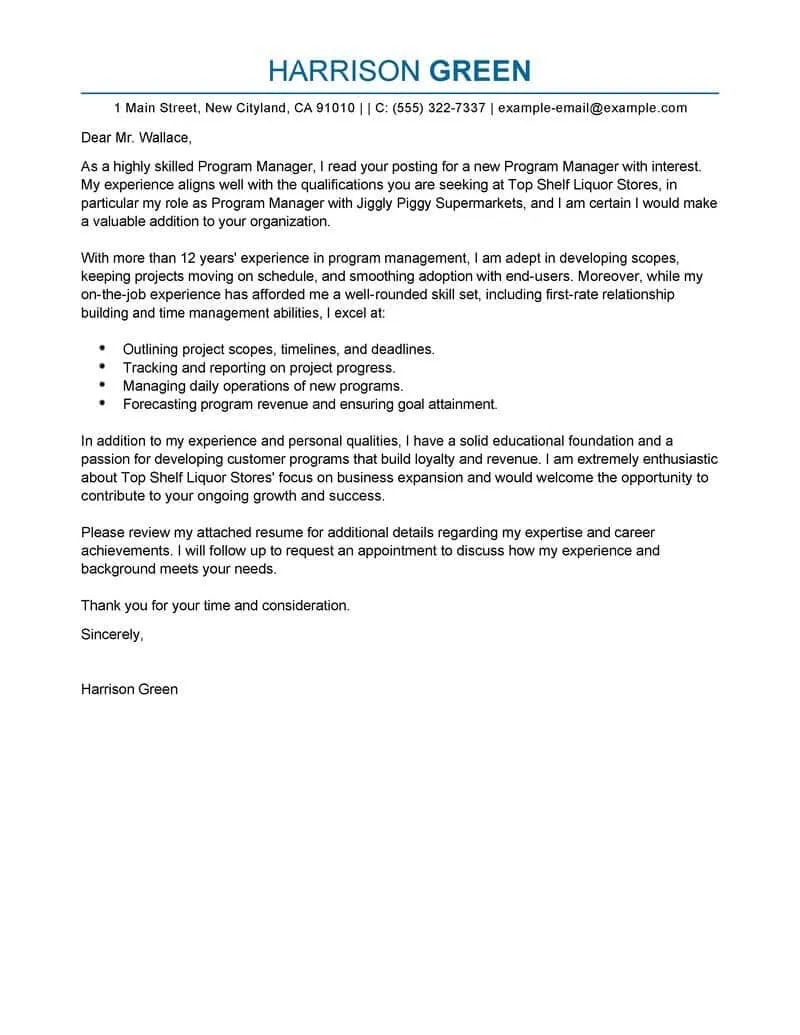Why a Strong Cover Letter Matters for Manager Positions
In the competitive world of management, a strong cover letter is your first chance to make an impression. It shows who you are, what you can do, and why you’re the perfect fit for the job before the hiring manager even sees your resume. Your cover letter is your chance to showcase your experience and leadership skills in a way that isn’t possible in a resume. A compelling cover letter for a manager role tells a story that connects your past experiences to the specific needs of the role and the company. It should emphasize your key achievements, your leadership abilities, and how you can contribute to the organization’s success. A well-written cover letter demonstrates your strong communication skills and your understanding of the company’s goals, which sets you apart from other candidates. It’s your chance to create an immediate positive impression.
Key Components of a Manager Cover Letter
A successful cover letter for a management position includes several key parts. These components work together to create a persuasive and informative document that grabs the hiring manager’s attention from the start. Structuring your cover letter properly and including the right information dramatically increases your chances of getting an interview. Be sure to customize these components for each job application; personalization is key. The following paragraphs will break down each key element to make sure you create an effective cover letter.
Header and Contact Information

Your header is the start of your cover letter, and it should look professional. It’s the first thing the hiring manager sees. Make sure it is clean, well-formatted, and easy to read. The header should include your full name, address, phone number, and email address. It is vital to ensure the information is up-to-date and accurate. This makes it easier for the recruiter to reach you for the next steps in the application process.
Formatting Your Header
When formatting, use a simple and professional font, such as Arial or Times New Roman. Choose a font size between 10 and 12 points for easy reading. Decide whether you want the header aligned to the left or right. Whatever you do, ensure there’s enough space between the lines of text. Using a consistent format throughout your entire cover letter indicates your attention to detail. Avoid using excessive embellishments that might distract from the content. Always make sure the spacing is consistent to avoid the clutter of the document.
Salutation and Addressing the Hiring Manager
Addressing your cover letter directly to the hiring manager proves you’ve put in extra effort. The standard salutation is ‘Dear Mr./Ms./Mx. [Last Name]’. You can also use ‘Dear Hiring Manager’ if you can’t find the name. Avoid using generic greetings, such as ‘To Whom It May Concern,’ which can make your letter feel impersonal. The aim is to make a positive impression from the start.
How to Find the Hiring Manager’s Name

Researching the hiring manager’s name is essential. Check the company website, LinkedIn, or other professional networking platforms. If the hiring manager is not listed in the job posting, you can try searching for the hiring team or the department head. If you cannot find the person, you can contact the company’s HR department. Knowing the name of the hiring manager adds a personal touch to your cover letter. It shows you took the initiative to learn more about the company and the people involved in the hiring process. This extra effort can set you apart.
The Opening Paragraph Catching Attention
The opening paragraph is your hook. Start with a short, engaging statement that grabs the hiring manager’s attention immediately. Mention the position you’re applying for and how you found the job posting. Next, state your most relevant qualification or achievement. This highlights why you’re a good fit for the role. This sets the stage for your further discussion and encourages the reader to continue reading your letter.
Highlighting Relevant Skills and Experience
In the main part of your cover letter, provide a detailed account of your relevant skills and experience. Match these with the job description. Show how your abilities meet the needs of the position. Focus on your management expertise, your leadership skills, and any accomplishments you can quantify. Use the STAR method or other techniques to provide specific examples of how you’ve made a difference in past roles. Emphasize your unique contributions and highlight the value you bring to the organization. Remember to include a mix of hard and soft skills.
Quantifying Achievements and Results

Quantify your achievements by including specific data and numbers. For instance, instead of saying, “Improved sales,” say, “Increased sales by 15% in one quarter.” Quantifiable results give more credibility to your claims and show your value to the hiring manager. Use numbers to demonstrate the impact of your actions whenever possible. Include percentages, dollar amounts, or other metrics that demonstrate your success in previous roles.
Using the STAR Method for Examples
The STAR method is a great tool to provide clear and concise examples of your experience. STAR stands for Situation, Task, Action, and Result. Start by describing the Situation you faced, then outline the Task you were given, explain the Action you took, and provide the Result of your efforts. Using the STAR method will help you organize your thoughts in a way that effectively showcases your skills, making your achievements easy to understand and remember. This method is perfect for showing how you handled past experiences.
Demonstrating Leadership and Management Skills
Highlight your leadership and management skills by providing examples of how you’ve led teams, managed projects, and mentored others. Explain how you’ve successfully implemented strategies, resolved conflicts, and made important decisions. Mention any awards or recognition you’ve received for your leadership skills. Leadership is one of the most important aspects of a managerial role; make sure that you show you have this skill. Also, describe your approach to team management, including your communication style and methods for motivating employees. Show how you have inspired people.
Tailoring Your Cover Letter

Every cover letter should be tailored to the specific job and company. Generic cover letters won’t impress hiring managers. Customize your letter to match the exact requirements of the role. This shows you’ve carefully reviewed the job description and understand the company’s needs. Personalize your letter to make yourself stand out from the competition. Taking the time to personalize your cover letter shows dedication.
Researching the Company and Position
Before you start writing, research the company and the position carefully. Understand the company’s mission, values, and recent achievements. Review the job description thoroughly and note the key requirements and responsibilities. Use this information to tailor your letter and show how your skills and experience align with the company’s goals. Doing this shows that you are interested in the role and shows your dedication to the company.
Matching Skills to Job Requirements
Carefully match your skills and experience to the job requirements listed in the job description. Use the same keywords and phrases the company uses to describe the role. Provide specific examples of how you’ve used your skills to achieve results. This shows the hiring manager that you meet their needs and demonstrates your understanding of the position. If any of your skills aren’t mentioned, the recruiter could miss them.
The Closing Paragraph and Call to Action

The closing paragraph is your last chance to leave a positive impression. Restate your interest in the position and the company. Thank the hiring manager for their time and consideration. Include a call to action. This may involve stating that you are available for an interview. Let them know that you are excited to discuss your qualifications in more detail. The closing paragraph should summarize your key strengths and restate your enthusiasm for the opportunity.
Expressing Enthusiasm and Interest
Finish your cover letter with a clear expression of your enthusiasm and interest in the position. Highlight why you are excited about the opportunity. Mention anything specific that appeals to you about the company or the role. Let the hiring manager know you’re looking forward to hearing from them soon. Your enthusiasm should be genuine and relevant to the role. Express your interest and your motivation to make a positive impact.
Proofreading and Editing Your Cover Letter
Before you submit your cover letter, proofread and edit it very carefully. Check for any grammatical errors, spelling mistakes, or formatting issues. Make sure your writing is clear, concise, and easy to understand. Ask a friend or colleague to review your letter and provide feedback. A well-edited cover letter demonstrates your attention to detail and professionalism. A polished cover letter significantly increases your chances of getting an interview. Always review your cover letter before submitting it.
